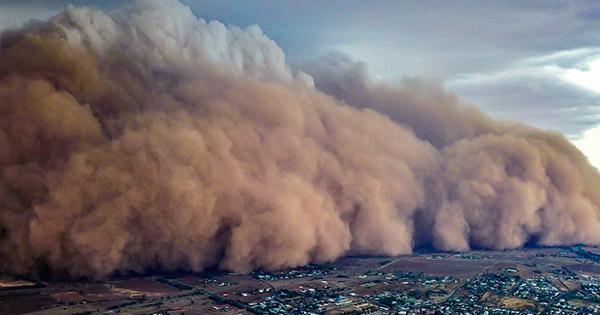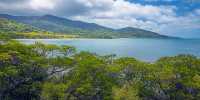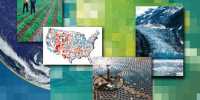Heads up, Texas A huge cloud of Sahara desert dust is moving west across the Atlantic Ocean and could reach the United States early next week. A National Oceanic and Atmospheric Administration (NOAA) satellite has captured a startling picture of dust June dust off the west coast of Africa. The National Weather Service Houston predicts that a huge cloud of Saharan dust will cross the Atlantic this week and reach the Caribbean and the Gulf of Mexico, then move to southeastern Texas on Tuesday, June 23rd. A forecast from NASA’s GEOS-5 model also suggests it could hit parts of Florida and Louisanna around that time too.
If you are staying in this corner of the world next week, you will see some dazzling sunrises and sunsets during the daytime during the twilight hours. The National Weather Service Houston tweeted, “If this dust reaches that area, we should expect some red skies during sunrise and sunset for a few days and there is probably dry weather as well,” the National Weather Service Houston tweeted.
The vast stream of desert dust is a layer of baking hot and dry air in the atmosphere, including the Saharan air layer, which travels at 10 to 25 meters (33 to 82 feet) per second in the cool surface air of the Atlantic Ocean. The Saharan Air Layer usually flies in mid-June during the summer and spreads activity over the tropical North Atlantic every three to five days.
“We’ve had a few outbreaks, but it’s significant in terms of size and how far it has reached the west,” Jason Dunion, a researcher at the University of Miami and the University of Miami, told the Palm Beach Post. “This Sahara picked up a lot of dust from the Sahara,” he added. The Saharan Air Level also tends to suppress hurricane activity, which is welcome news considering we recently entered a particularly rocky hurricane season.
Saharan dust can also bloom poisonous algae in North America. A 2001 NASA study found that Saharan dust clouds could scatter water along the West Florida coast with iron, which emits toxic algae. In addition to the red color in the water, poisonous algae flowers can kill large numbers of fish, shellfish, marine mammals, birds, and cause human skin and respiratory problems.















